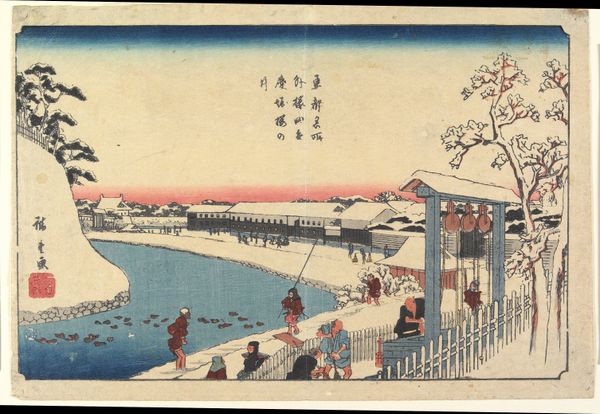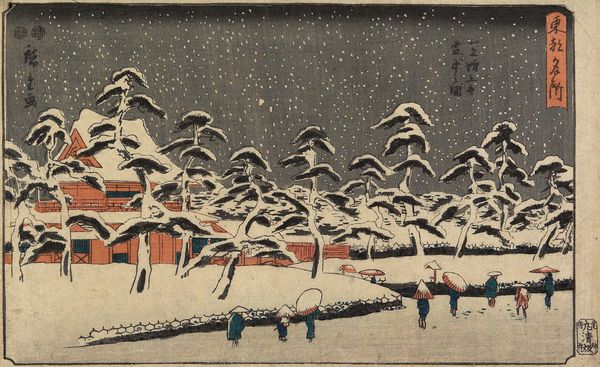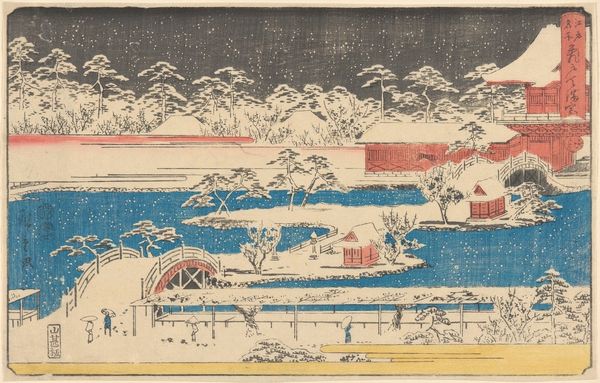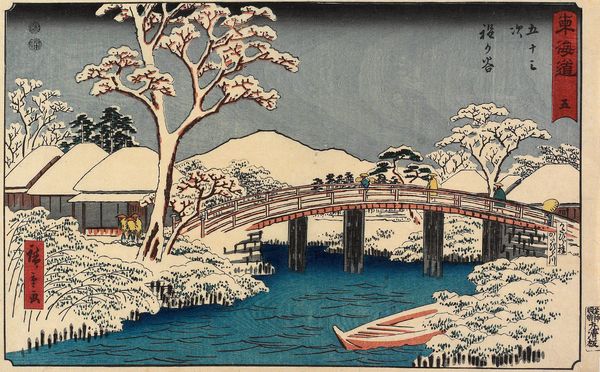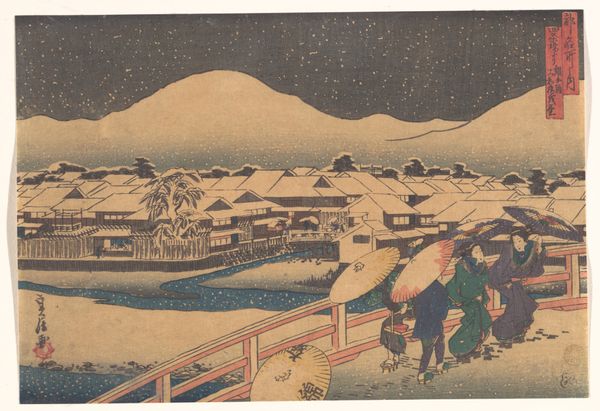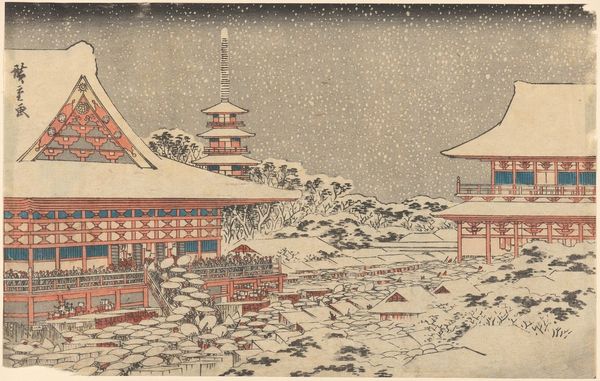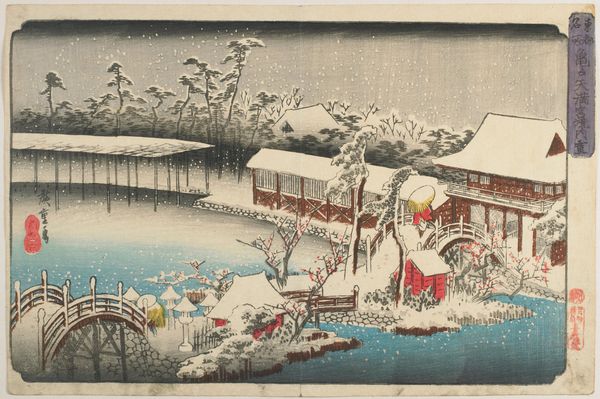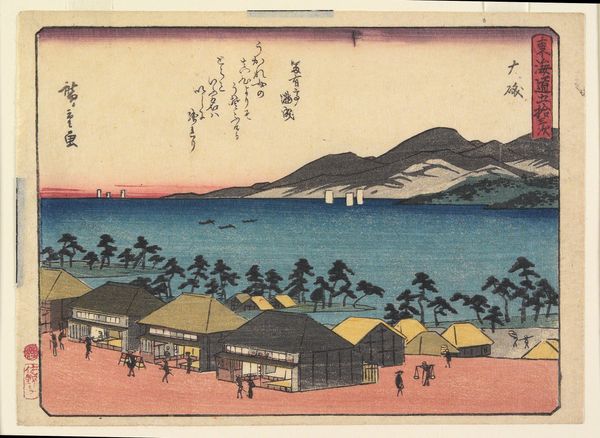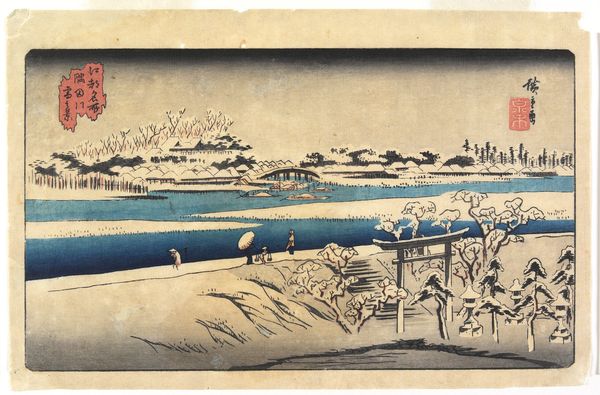
print, ink, woodblock-print
# print
#
asian-art
#
landscape
#
ukiyo-e
#
japan
#
ink
#
coloured pencil
#
woodblock-print
#
cityscape
Dimensions: 8 3/4 × 13 3/8 in. (22.2 × 34 cm) (image, horizontal ōban)
Copyright: Public Domain
Curator: Well, this feels utterly peaceful. It's one of those pictures you could just fall right into and disappear. Editor: Indeed. Here we have Utagawa Hiroshige's woodblock print, "Snow at Akabane Bridge in Shiba," created around 1844-1845. Curator: Woodblock, huh? That's wild considering how soft it all looks. The way the snow sits on every little branch…it's magical. Almost makes you cold just looking at it! Editor: Hiroshige masterfully employs the ukiyo-e technique to create depth. Notice the careful use of perspective as the waterway recedes into the background. The linear precision offers structural insight. Curator: Right, right, the "lines," sure, but for me, it's all in that muted blue of the water against the cream of the snow. Gives the scene a hushed, dreamlike quality. Sort of isolates you, you know? Like watching the world from inside a snow globe. Editor: The color palette, restrained as it may seem, serves to accentuate the formal composition of the piece. Also, consider the figures; the slight lean of their forms as they trudge into winter hints toward the socioeconomic subtext common during the Edo period. Curator: You see, I look at those tiny people under their umbrellas and just feel connected. They're small, but they’re carrying on, going about their lives in this big, beautiful world… snow or no snow. Adds this layer of quiet hope, I think. Editor: That sentiment is valuable because it offers context beyond merely the aesthetic appeal, which is so clearly foregrounded by Hiroshige’s choices. Curator: I tell ya, the artist had to have felt this too. It practically shouts of quiet reflection. That kind of beauty is never accidental. Editor: The ability of an image to instill personal interpretations… that's truly the test of a work of art.


